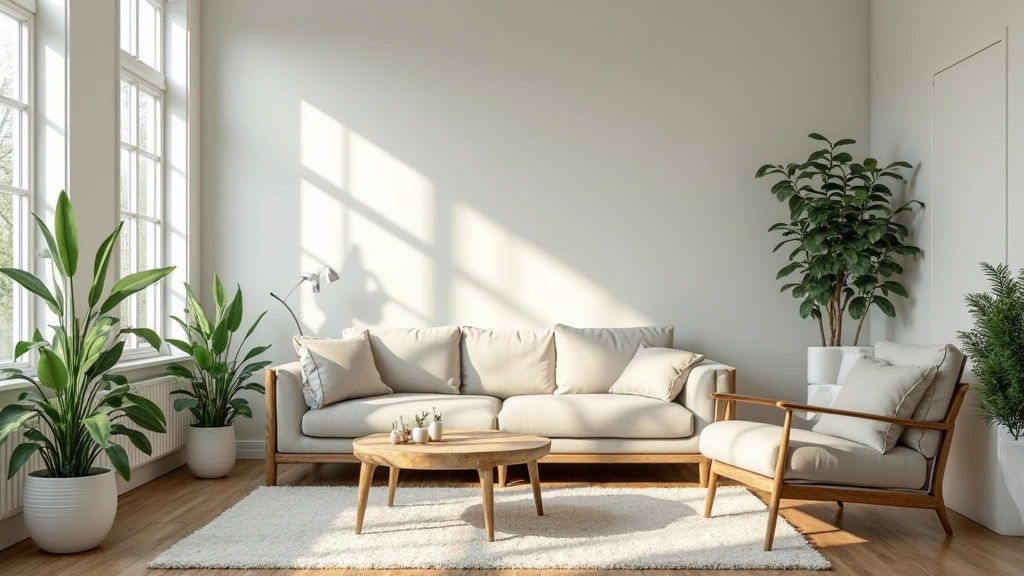I put this together because clutter makes life louder. When my space fills with mail, cords, and odds and ends, my brain feels crowded too. I want a home that breathes. A place where light pours in and a chair feels inviting, not crowded. Minimalist decor helps me feel calm, not overwhelmed.
Who it’s for You juggle work, kids, or a small space, and this is for you. If you care about a room that looks neat and takes little effort to keep tidy, you belong here. You want a home that supports your day, not a scene of chaos. This is written for real life, not magazine perfection.
What you’ll get Here are 14 minimalist home decor tips that fit real life. They cover color, storage, layout, and the small touches that add comfort. They are affordable, simple, and easy to start this week. You’ll learn ideas that you can actually use without a big plan or a huge budget.
Warning: Number seven is revolutionary. It asks you to rethink one common item and use it in a new way. It’s a nod to creative simplicity that can change how you see a room. You’ll find ideas that push you to try fewer pieces with more intention, not more stuff with less space.
Small moves can make a big shift. You might try one tidy tray on the entry table, one calm color palette, and one soft textile that ties a room together. Expect tips that feel doable: simple swaps, clear zones, and spaces that invite you to sit and stay a moment longer. I’ll walk you through how to pick a spot, set a tiny goal, and make those changes stick.
If you want a home that helps you breathe and a mind that feels more at ease, this post is for you. Read on, pick a tip that makes sense to you, and try it this week. You’ll see your space and your thoughts become lighter, one quiet step at a time.
Contents
- 1. Choose a Neutral Color Palette
- 2. Embrace Open Spaces
- 3. Select Functional Decor
- 4. Limit Decorative Items
- 5. Invest in Quality Over Quantity
- 6. Add Natural Elements
- 7. Implement a ‘One In, One Out’ Rule
- 8. Make Use of Vertical Space
- 9. Stick to a Few Core Textures
- 10. Declutter Regularly
- 11. Mindful Sourcing of Home Goods
- 12. Create Zones for Functionality
- 13. Personalize Thoughtfully
- 14. Mind Your Lighting
1. Choose a Neutral Color Palette



You’re aiming for a calm, uncluttered look. A neutral color palette helps you get there fast. It makes rooms feel bigger and calmer. It also gives you a clean stage for textures, shapes, and small accents.
Here is how to use neutrals effectively:
– Limit to three main colors to keep the space balanced and easy on the eye.
– Choose whites, beiges, and soft grays as your core trio and add warmth with natural textures like wood, linen, or jute.
– Refresh old pieces with paint in a light shade to turn them into quiet focal points rather than loud statements.
– Add a single color pop sparingly with one item, such as a framed print or a leafy plant.
– Use mirrors and glossy surfaces to reflect light and brighten corners.
Tips for applying neutrals in real rooms:
Test swatches on your wall before painting.
Look at them in morning and evening light.
Choose textiles that echo your base neutrals for cohesion.
If a room feels flat, mix a warm neutral with a cool one.
Paint the ceiling a shade lighter in small rooms to open the space.
Lighting matters.
Avoid pure white on every surface.
Add texture with fabric, wood, and stone.
Let neutrals breathe.
2. Embrace Open Spaces
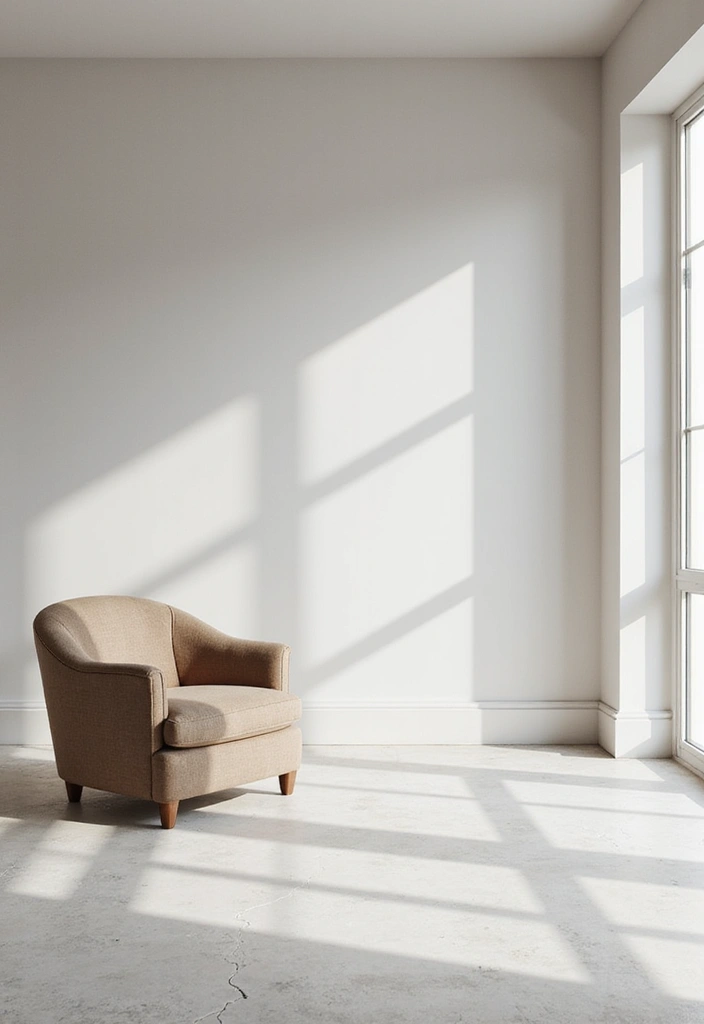
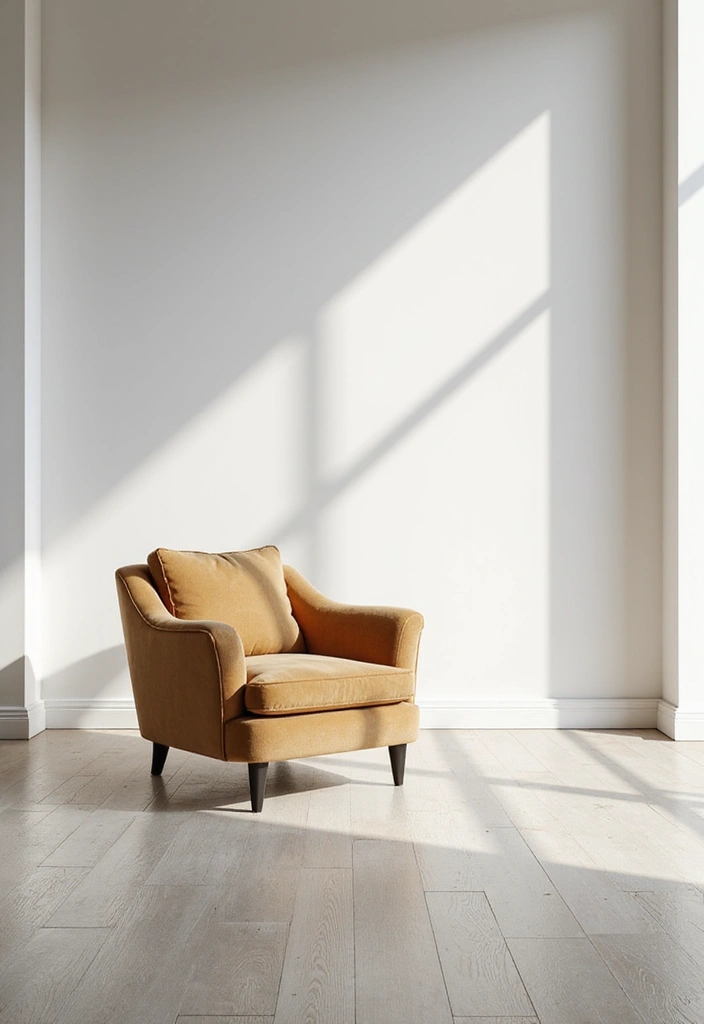
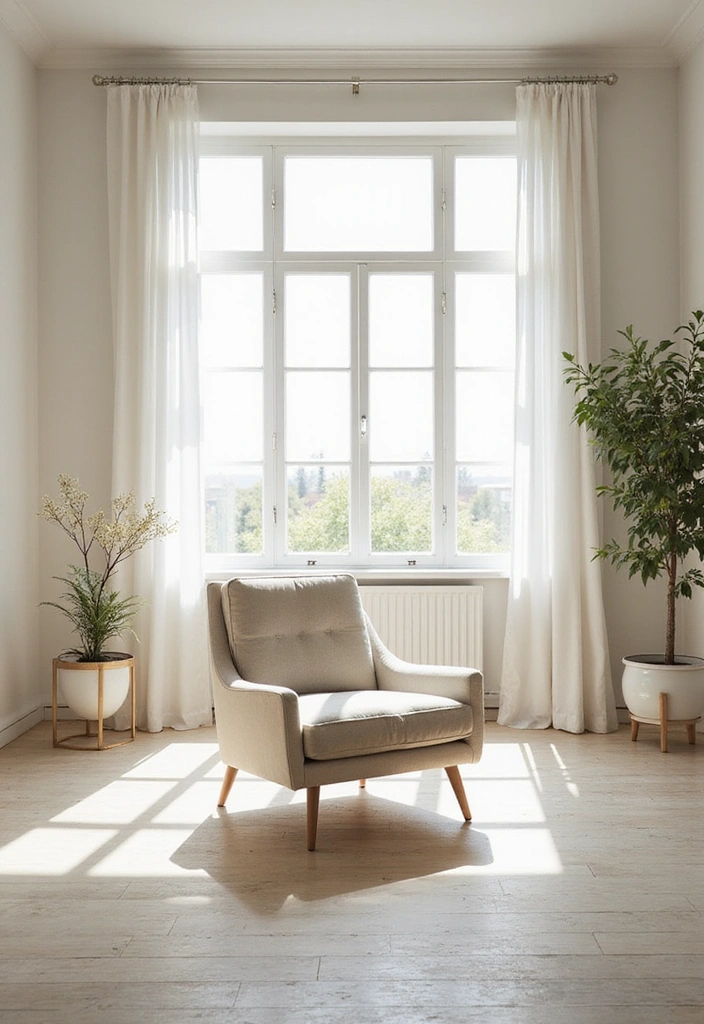
Are you feeling boxed in by your own rooms? A clean, open space makes you move easier and think clearer. Minimalist decor loves roomy layouts that let light move and air flow. Here is why you should prune clutter.
– Start with a room audit: walk around and ask, Do I use this weekly? If not, store or remove it.
– Pick a few essentials: choose pieces that serve a purpose and fit your style. A chair or small shelf can anchor the room.
– Choose multifunctional pieces: furniture with built-in storage helps hide blankets or toys.
– Keep pathways clear: leave at least two feet of walking space around furniture.
– Let vertical space carry the load: tall shelves and wall cabinets free up floor space.
– Light and mirrors: light walls reflect glow and a mirror doubles the sense of space.
– Go leggy: choose furniture with legs that show floor space so rooms feel bigger.
– Define zones with soft elements: use a thin rug to separate a seating area from a reading corner.
Next steps: Try rearranging one room this week. See what opens up and what floats better.
3. Select Functional Decor

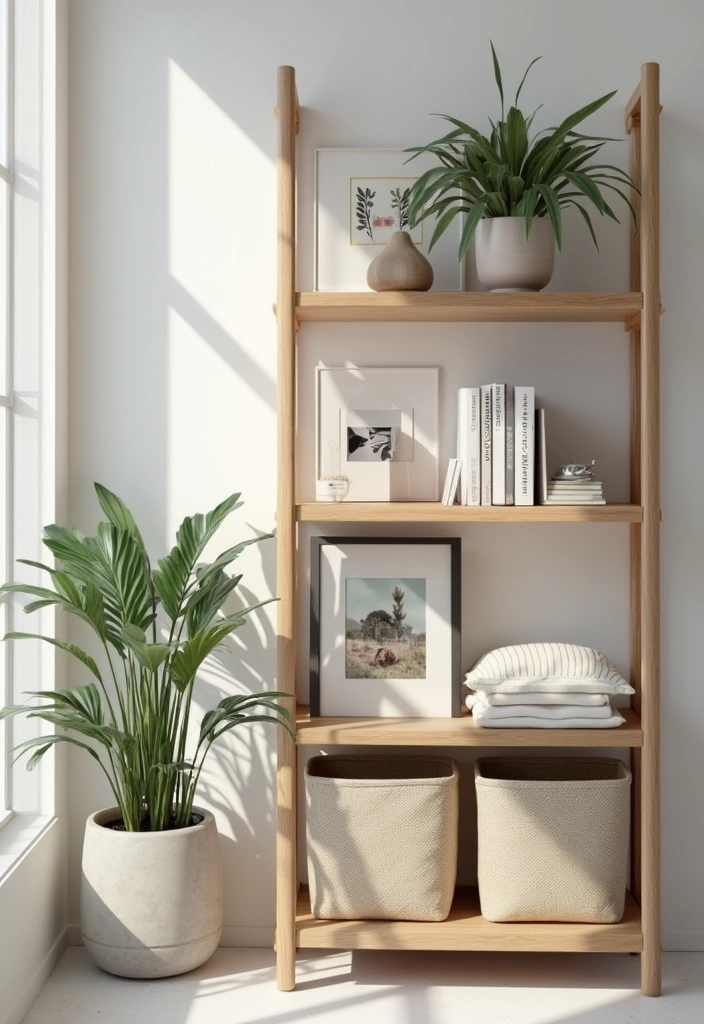

In a minimalist home, you want every item to earn its keep. You want calm spaces that still feel warm. Functional decor helps you get both.
Here is why: decor with a job reduces clutter and makes daily life smoother. Your eye rests on simple shapes and honest materials. Pick pieces that look good and work hard.
– Choose shelving that shows books and small plants. It keeps things off the floor and adds height.
– Wall-mounted shelves save floor space and display your favorites.
– Decorative storage bins and baskets hide cords and toys while adding texture.
Think about materials and style. Wood, metal, wicker, and ceramic mix well with clean lines. Choose pieces that pair with your colors and light. The goal is a calm rhythm, not a showroom.
Dual-purpose pieces multiply your options. They should feel warm and not bulky. Try a bench that acts as seating and a place to stash blankets. A small cabinet with a hidden drawer can hold chargers and cables.
Next steps:
– Audit quickly: remove items you never use.
– Add two dual-purpose pieces for each room.
– Place them where you spend the most time.
– Do a five-minute tidy weekly.
4. Limit Decorative Items

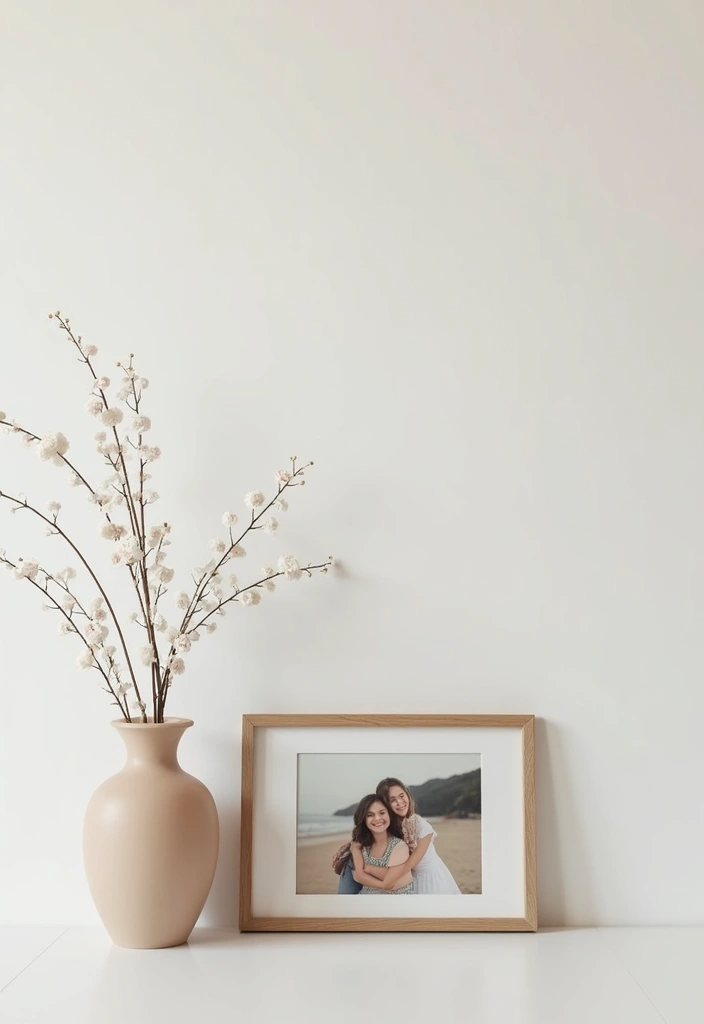

Feeling crowded by decor? You want a calm space that still feels warm. Minimalist decor works when you pick items that truly matter. Here is why limiting pieces helps your room and your mind.
– 1) Pick a few pieces that matter
Choose 2 to 4 favorites. A framed family photo, a simple vase, a small sculpture. When you limit pieces, each item has a job and a voice.
– 2) Build a focused gallery wall
Group 3 to 5 pieces on one wall. Use matching frames or a single color frame. This becomes a focal point instead of spreading art across shelves.
– 3) Rotate decor seasonally
Swap in new colors or textures every few months. Store the rest in a labeled box. This keeps the look fresh without buying more.
– 4) Let one piece anchor the room
Let a favorite item decide the color palette. If you love a blue vase, pull in blues for cushions and art. Keep other accents neutral.
– 5) Keep surfaces clear and organized
Use a tray to hold a single plant, a candle, and a book. If you must store items, tuck them in a decorative box. The goal is calm, not emptiness.
Next steps: measure your wall, plan the layout, and test it with tape before you hang. With fewer pieces, each item shines. Your space feels simpler and your mind feels lighter.
5. Invest in Quality Over Quantity


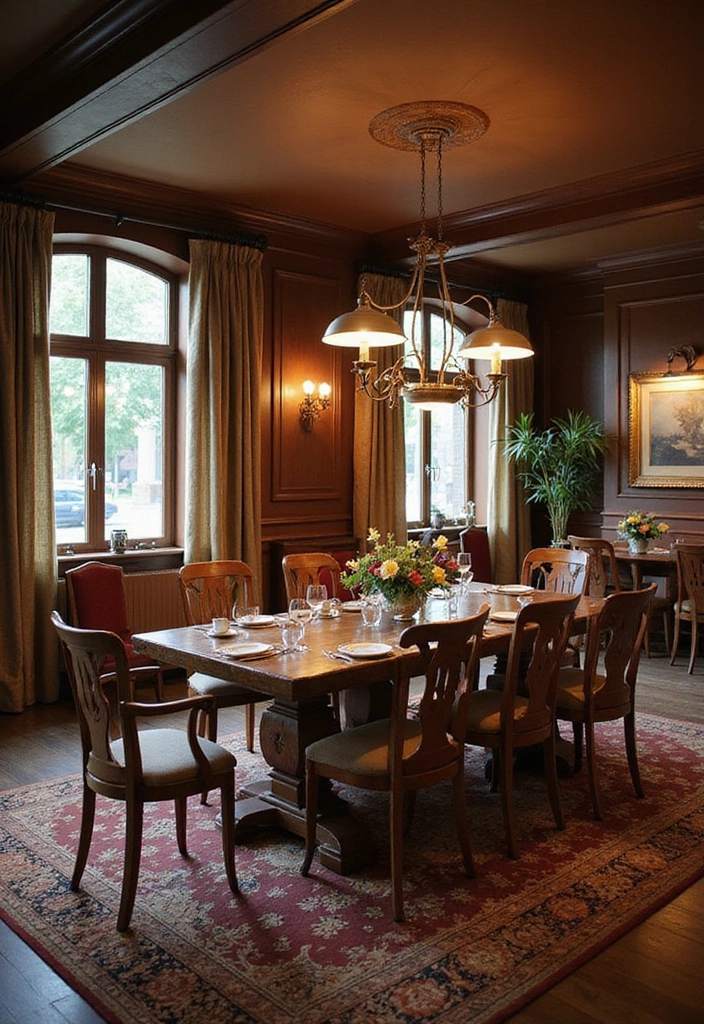
You want a calm, clutter-free home. The path is quality over quantity. You will feel the difference every day. Here’s how to make it work.
– Budget for key pieces. Set aside money for two to three anchors like a dining table, a sofa, or a bed frame. This keeps you focused and prevents impulse buys. This keeps your space calm and focused.
– Choose durable materials. Look for solid wood, steel, and natural fabrics. They last longer and can be repaired instead of replaced. Trust brands that show care through warranties.
– Consider second-hand or vintage. A piece with a history adds charm. Inspect joints, cushions, and legs before you buy. If you buy online, ask for close-up photos.
– Favor timeless styles. Classic lines and neutral tones stay useful for years. Trends pass; good design stays. Timeless styles adapt to many rooms.
– Shop with a plan. Measure rooms and test sit and lift. If it fits daily use, it earns a spot. Draft a quick shopping list to compare options.
– Put function first. Let heavy items be used daily. Keep decorative pieces small and simple so the space breathes. Test the finish by wiping a small area.
– Care and upkeep. Wipe surfaces regularly and oil wood when needed. Simple care keeps both value and vibe intact. Keep a regular cleaning schedule.
Be patient. Quality takes time, but the payoff is a calmer home and fewer regrets.
6. Add Natural Elements

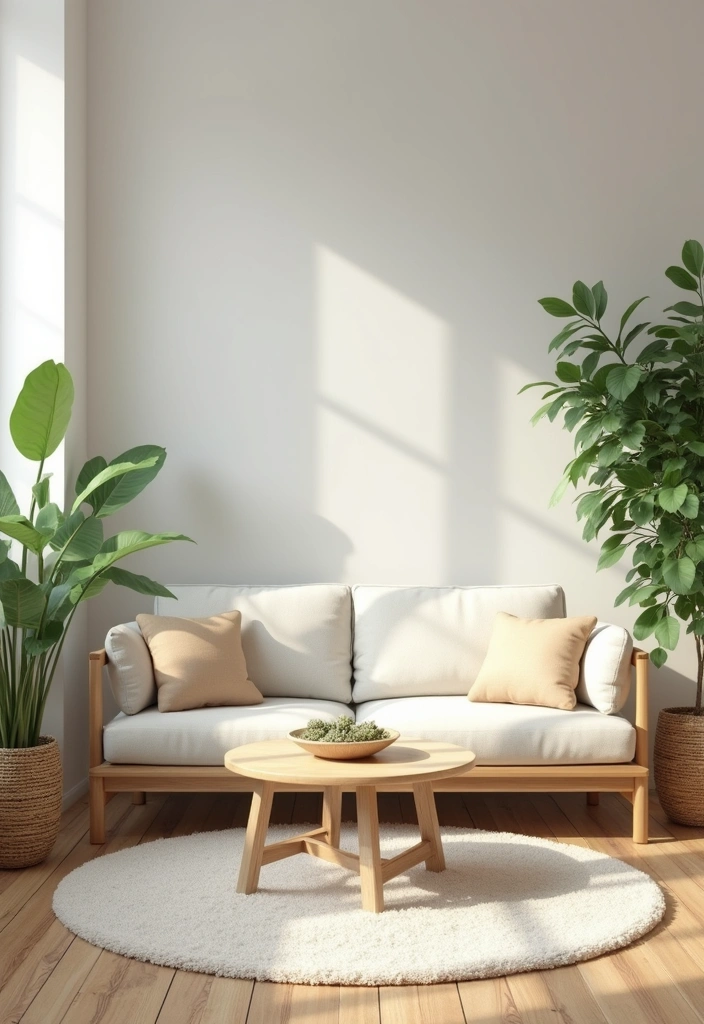

Why add natural elements
You want a warmer feel in a clean, calm room. Natural elements help you connect to outdoors and slow the room down. A touch of wood, stone, or plants adds texture and a soft glow. A wooden coffee table or a stone bowl can become a calm focal point.
Here is why: plants lift the mood and refresh the air. Big leaves bring scale; small succulents keep the look light. Use texture to keep interest without clutter. This approach stays clean while inviting life.
Simple ways to bring nature home
– Choose plants that are easy to care for, like snake plant, pothos, or ZZ plant.
– Add natural textiles such as wicker baskets, cotton throws, and linen cushions to soften the space.
– Place a few wood or stone accents in key spots to create calm focal points.
– Create a small indoor garden on a sunny shelf or in a compact wall planter.
– Let natural light play on wood grains to deepen warmth.
– Place a bold plant on the entry table to greet you.
Next steps: start with one swap, then add a second plant or texture as you settle in. You can mix new greens with simple decor instead of big changes. You will notice the calm quickly. It is easy to adjust as you go.
7. Implement a ‘One In, One Out’ Rule
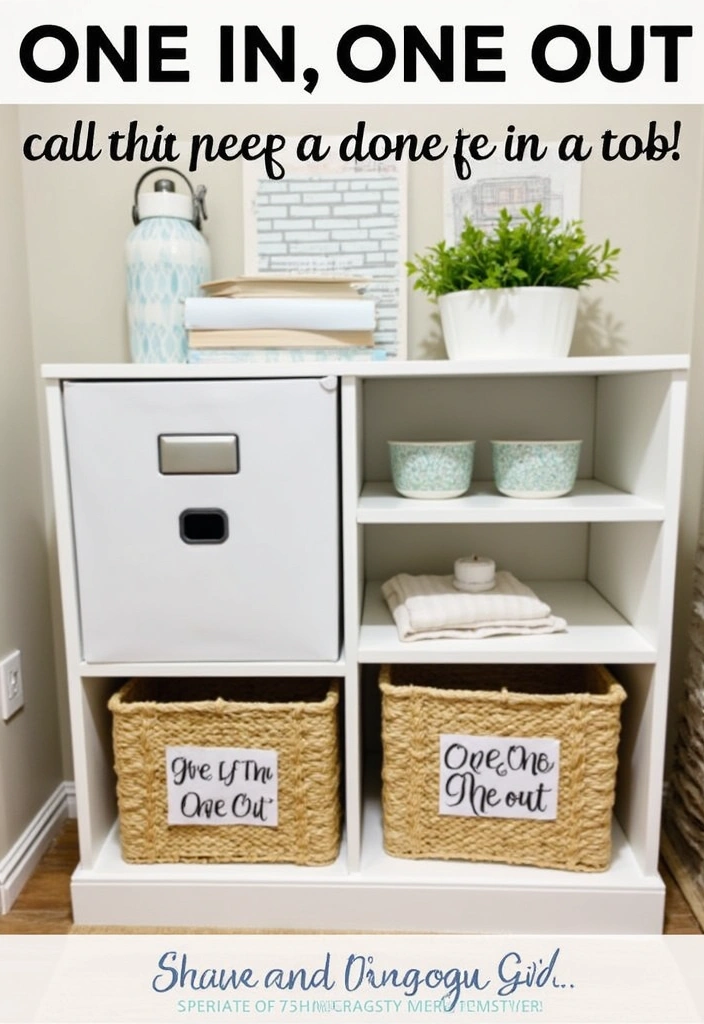
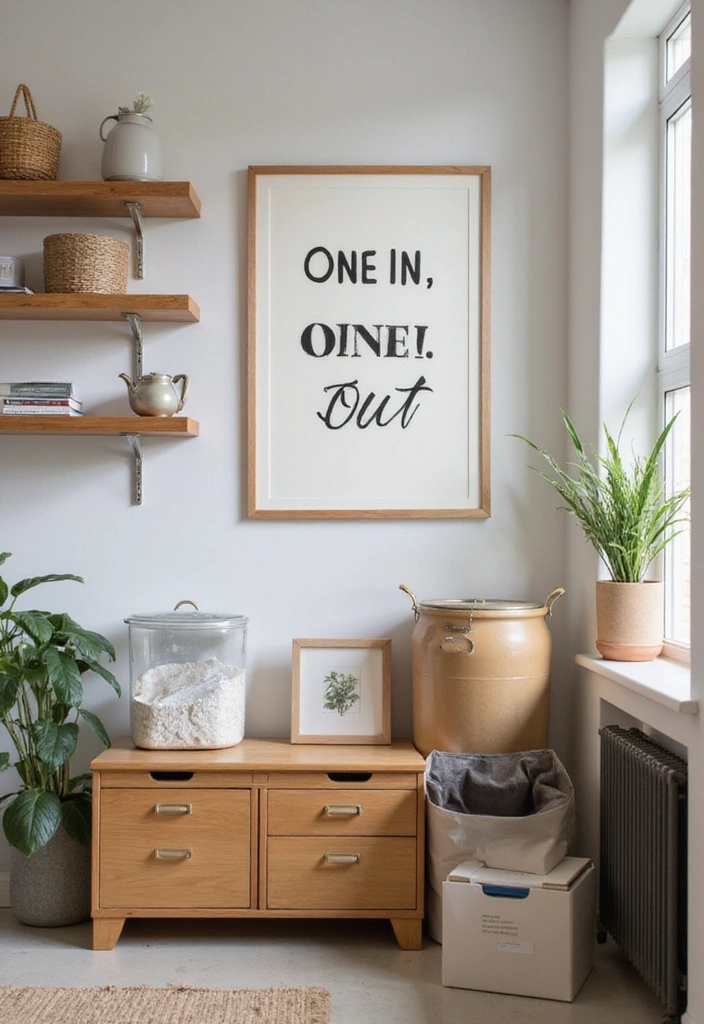
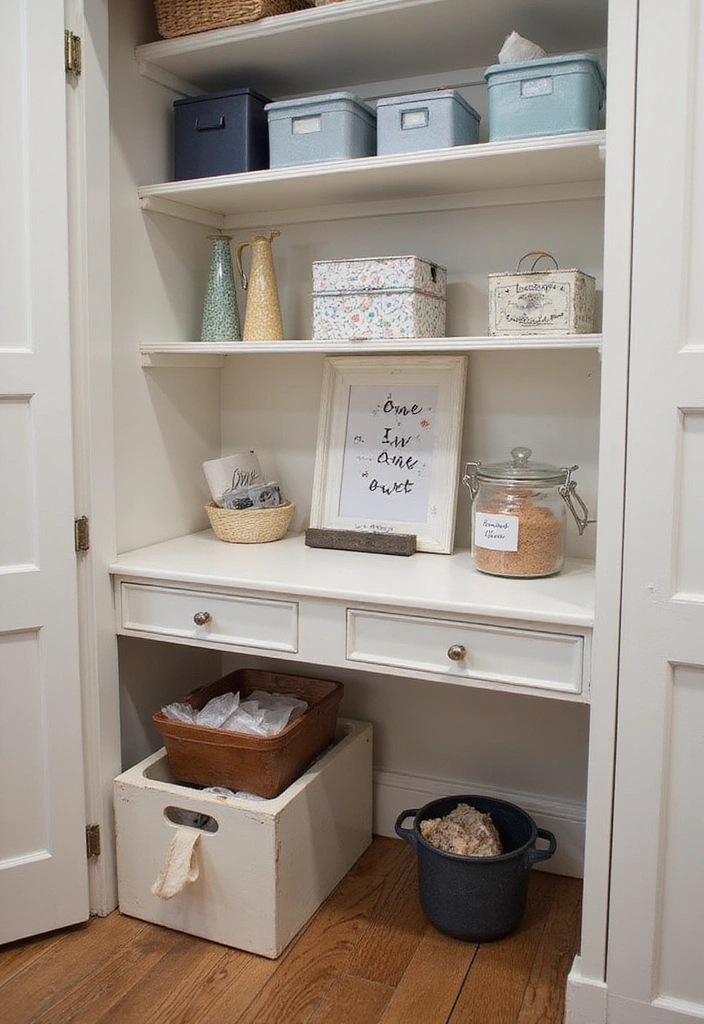
Feeling overwhelmed by a crowded home? The One In, One Out rule helps you keep a calm space and a clear mind. It forces you to think before you buy and to let go of items that no longer fit your life. You’ll notice shelves feel lighter, your mornings run smoother, and you spend less time cleaning.
– One in, one out Whenever you bring something new home, remove one thing. It can be a similar item or something you no longer use. This rule keeps clutter steady and makes you shop with care.
– Keep a donation box Put a small bag in a closet. When it fills, take it to charity. Simple and quick.
– Schedule a monthly review Set a 15-minute timer to scan closets, drawers, and shelves. Decide what to keep, donate, or repurpose.
– Try upcycling and smart reuse Turn jars into organizers, old fabrics into rags, or a worn lamp into a new look with a shade swap. It saves space and builds pride in your home.
– Shop with intention Make a short list and stick to it. If an item would replace two clutter magnets, go for it; otherwise, pass. This keeps your decor simple and useful.
8. Make Use of Vertical Space

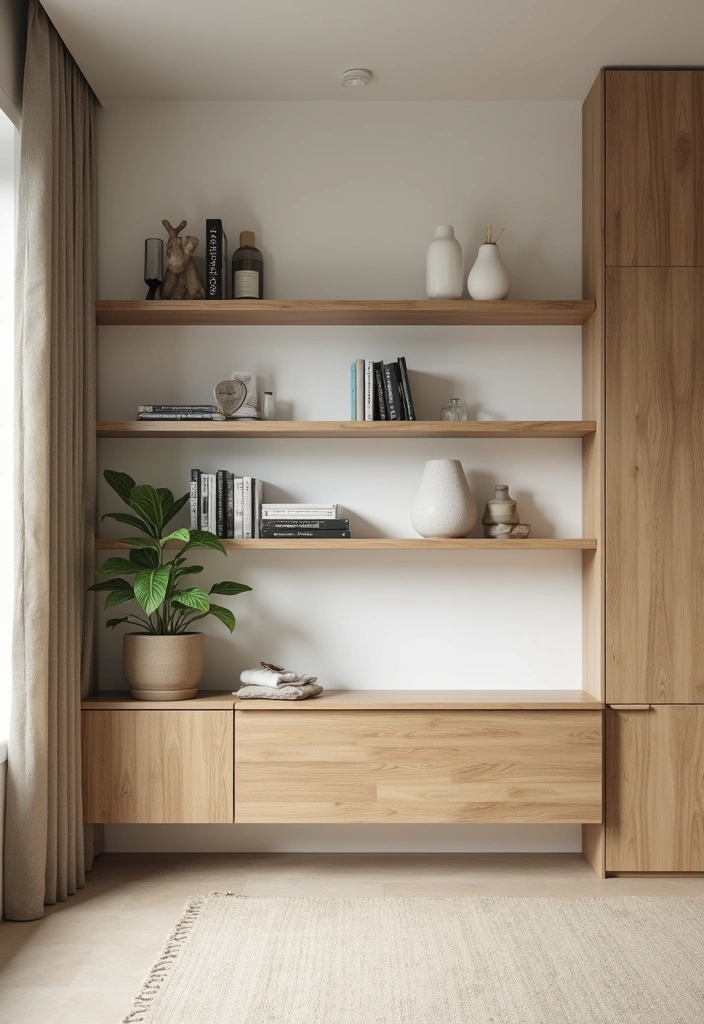
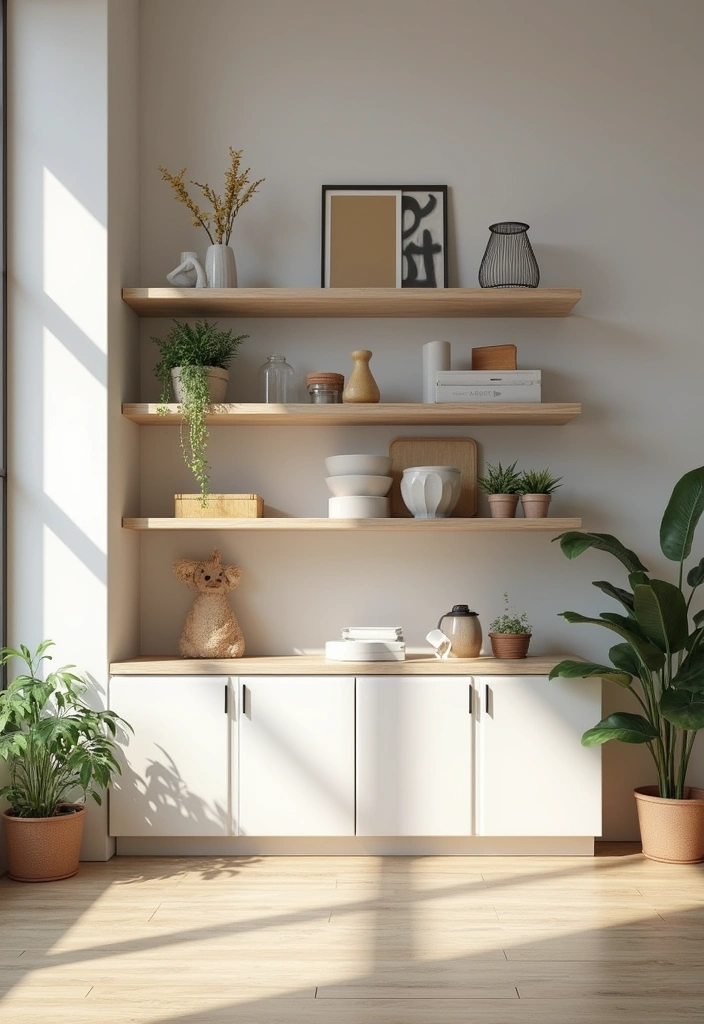
Your space can feel crowded when the walls sit bare. Vertical space can give you more room to live and store. Here is why vertical space matters. Let’s break it down.
– High shelves for books and keepsakes.
Place items up high to free floor space. Choose lightweight pieces for balance. Keep a few favorite items low so you can still enjoy them.
– Floating shelves.
They add a clean, modern touch without crowding the floor. Use sturdy brackets that fit your wall. Leave some room on the shelf for air.
– Wall hooks for quick access.
Hang coats, bags, or keys where you reach them daily. Keep a small tray nearby for loose items. Rotating hooks help you switch seasonally.
– Wall-mounted cabinets.
Pick slim, low-profile units that blend with your wall color. They hide tools, chargers, and small gadgets behind doors. Choose a depth that fits your room without sticking out.
– Vertical gardens with wall planters.
Greenery on the wall adds life and scent. Choose planters with a drip tray and a simple watering routine. If you water once a week, the wall stays neat.
Next steps: measure your walls, pick a spot with good light, and choose one idea to start. Install the right anchors, hang items safely, and keep the look tidy. With a little plan, your room feels taller and calmer.
9. Stick to a Few Core Textures


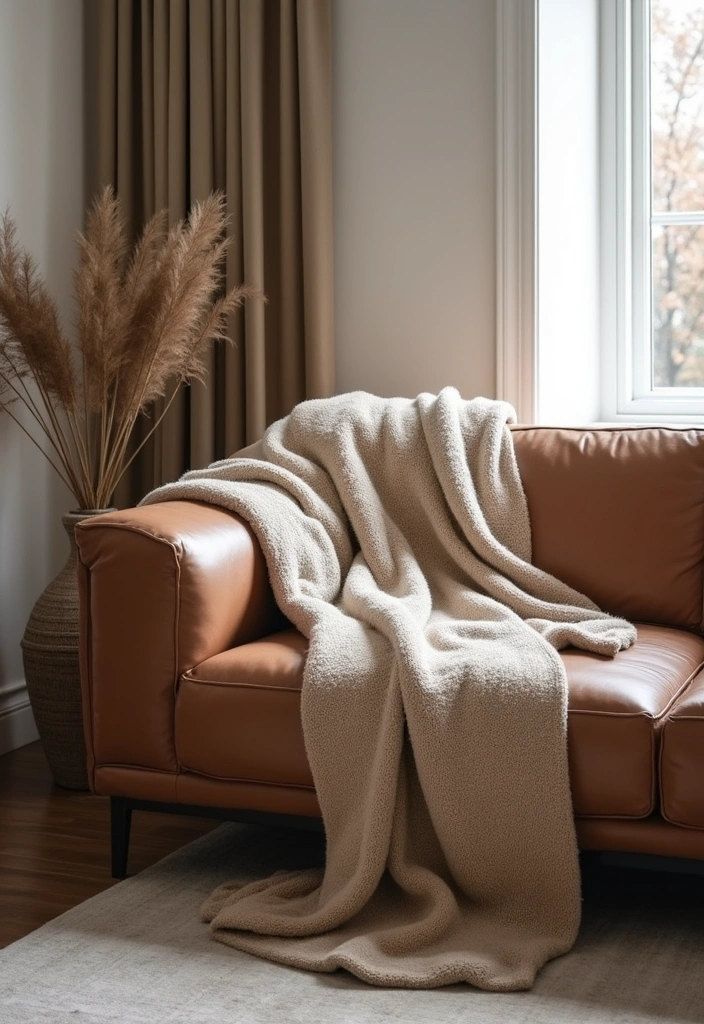
You want a calm, uncluttered room. Texture helps you get there without breaking the minimalist vibe. Stick to a few core textures so the space stays sleek, not busy.
Here is why: soft fabrics soften hard lines. Hard materials like wood and metal add structure. Together they create depth you can feel.
– Start with 2-3 textiles for comfort. Cotton and linen on throws or cushions feel breathable. Add wool or a knit for warmth in colder months. Keep patterns simple and colors muted.
– Pair soft textures with hard ones. A cotton throw on a leather chair, a wool rug on a smooth wood floor. The mix creates contrast without crowding the eye.
– Use texture to zone open spaces. Place a low-pile rug under a seating area to define it. Let a textured lamp shade mark a more intimate corner. Small details do the guiding.
– Think seasons. Swap in warmer textures for winter. Choose blankets and cushions that bring warmth but stay tidy and easy to clean.
Next steps: test a few combos in a weekend. Tweak the balance until the room feels calm and inviting. With careful texture choices, your space stays minimalist yet soulful.
10. Declutter Regularly

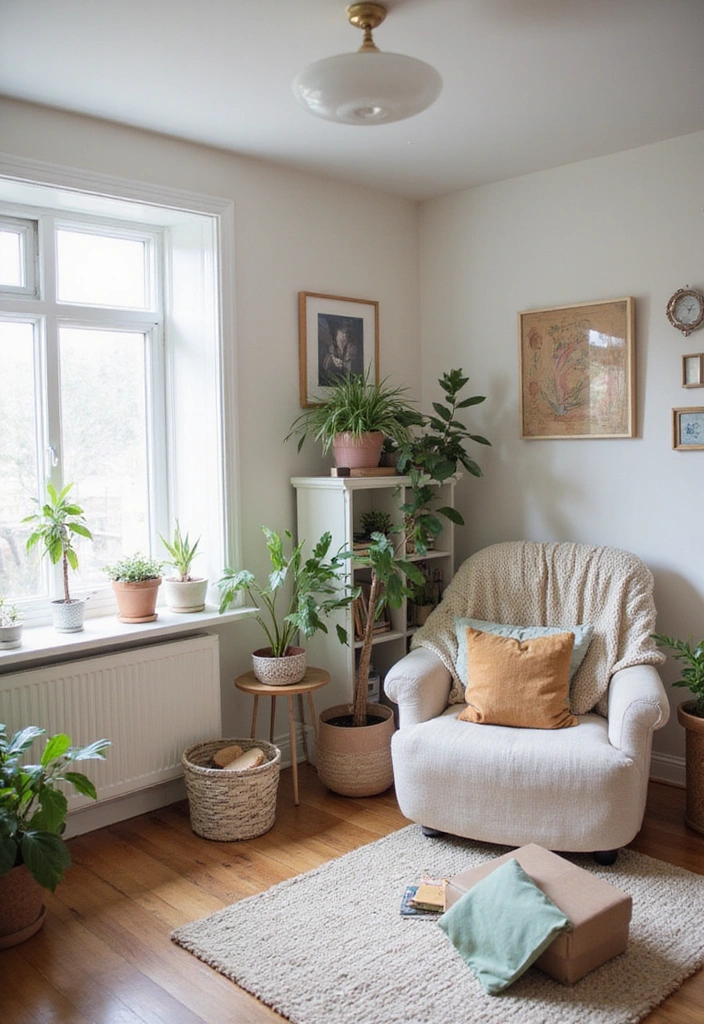
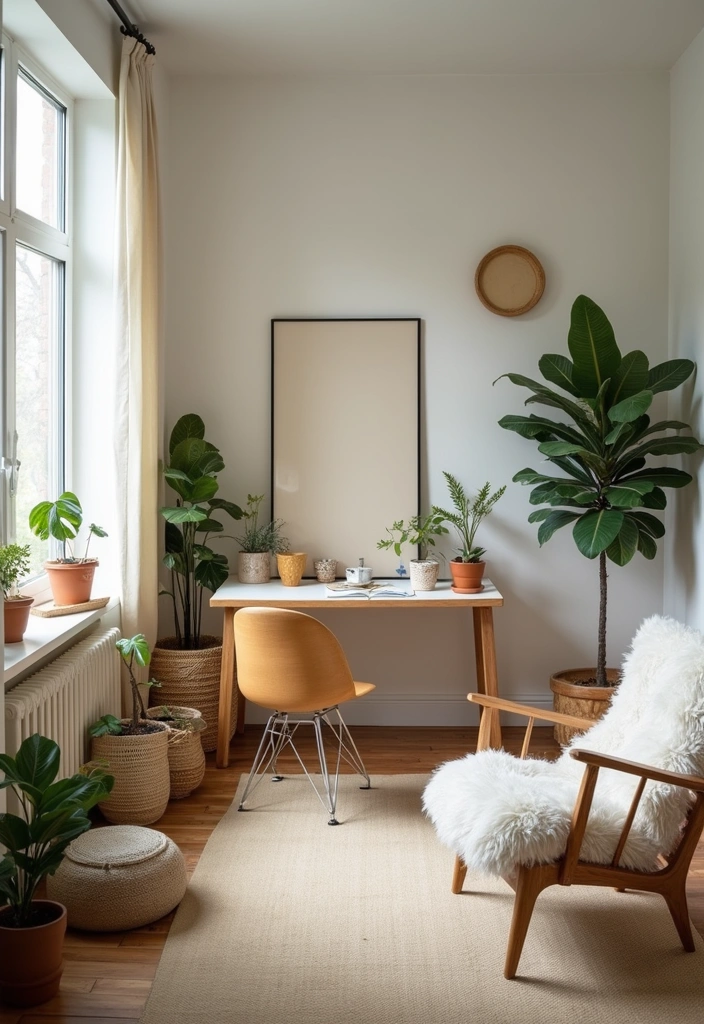
If your space feels crowded, you’re not alone. Regular decluttering keeps a calm home and a clear mind. A small, steady plan beats a big, scary cleanup.
Here is a practical rhythm that fits a busy life. Do a monthly check of what you own. Ask yourself what you really use and what you truly love. If you haven’t used something in a year, it’s a signal to let it go.
Seasonal decluttering adds a natural pace. In spring, clear winter coats and boots. In autumn, sort clothes for the next season. The cycle keeps piles from creeping back and feels less hard.
– Set a calendar reminder: pick a time each month and put it in your phone.
– Invite others: ask a roommate or family member to join.
– Celebrate small wins: snap a tidy photo and enjoy a short break.
– Create a simple triage rule: keep what works or sparks joy; donate the rest.
– Keep a quick exit plan: if unsure, move it to a maybe bin for a week.
– Track progress: note the space you freed to keep motivation high.
11. Mindful Sourcing of Home Goods
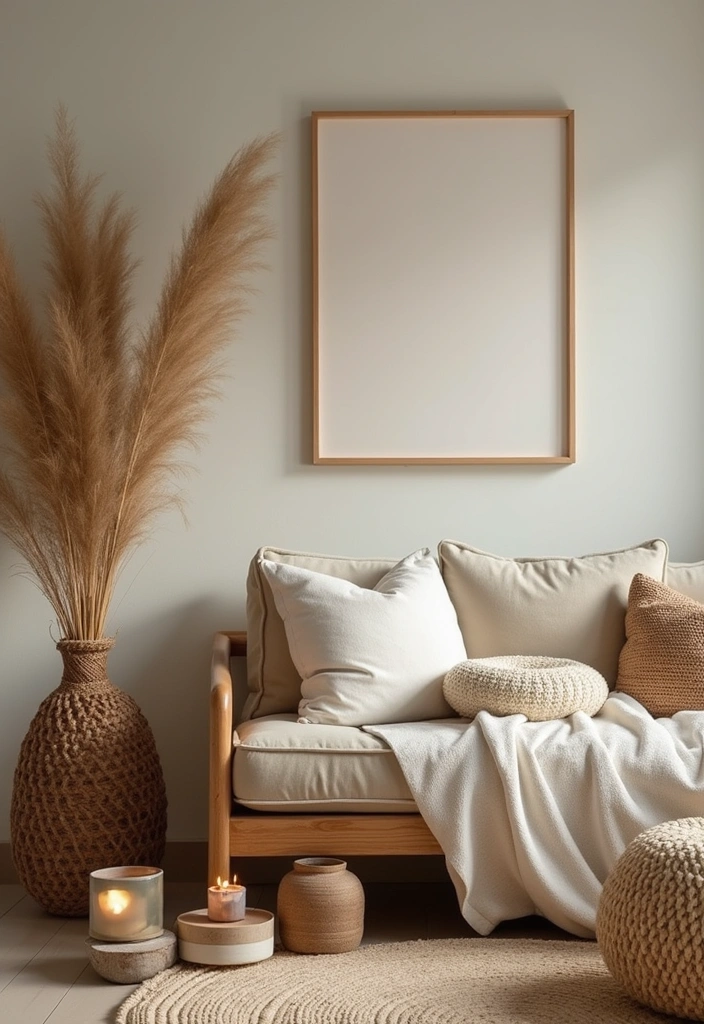
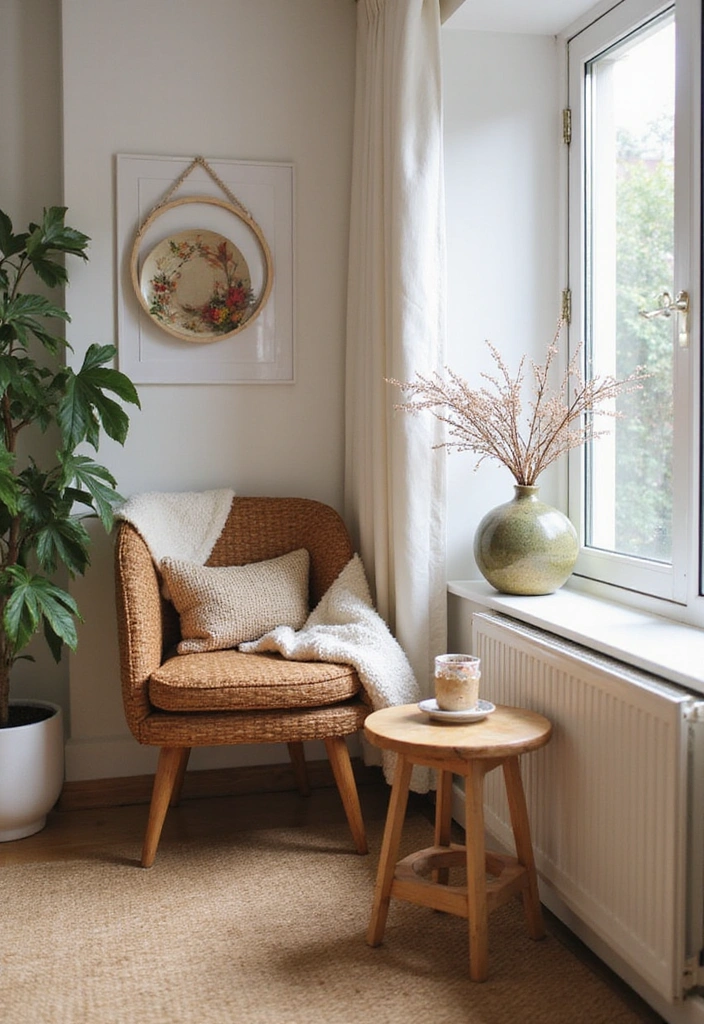

Mindful Sourcing of Home Goods
Your space should feel calm and inviting. You want style without clutter. Mindful sourcing helps you get there with fewer crowded shelves and a clearer mind.
Where you shop matters. Choose brands that treat people and the land with care. Look for items built with eco-friendly methods and natural materials. When you buy from local makers, you support your town and cut travel miles. It is not about big price tags. You can find good value in durable basics if you look.
Pieces with a story add warmth. A handmade bowl with a maker’s mark or a chair from a nearby wood shop can become a memory in your room. The backstory makes conversations easy and the space feel lived-in.
Suggestions
– Attend local markets or flea markets for unique finds.
– Research brands before buying to see if they use fair trade, natural materials, and safe dyes or finishes.
– Favor pieces from local makers or small studios with a clear origin and good craft.
– Consider DIY projects to create decor that perfectly fits your space, like a hand-painted vase or a stitched cushion.
– Start small in one room, then grow as you learn what you truly love.
Take notes as you shop to remember what fits your space.
12. Create Zones for Functionality
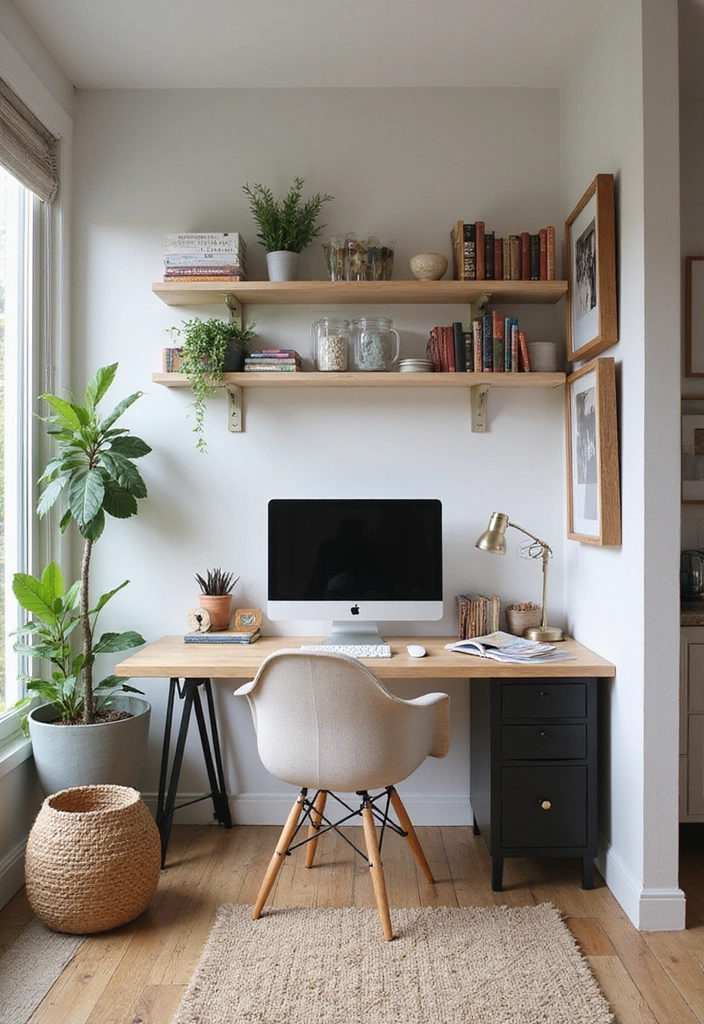

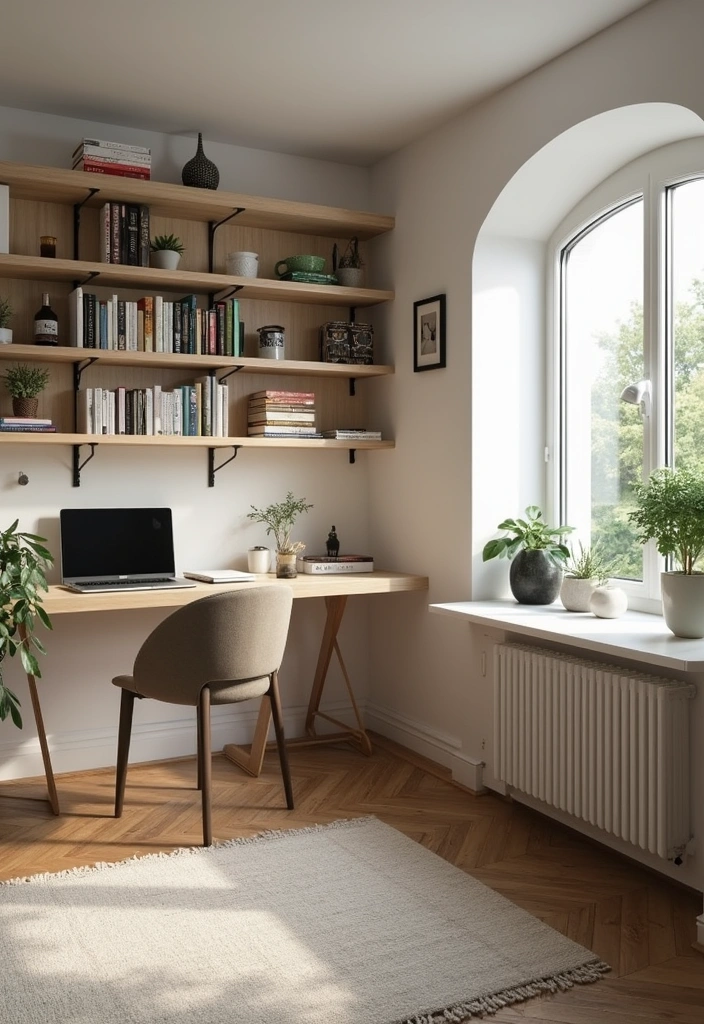
Feeling overwhelmed by a big room that never feels neat? The fix is simple. Create zones that fit how you live. When you set up spaces for each task, the room gains flow and your mind feels calmer. You see what belongs where, so cleaning becomes faster.
Zones give your home a clear map. A reading corner, a small work station, and a calm relaxation spot can share one room. The trick is to keep each zone small and focused. A few simple rules help you keep things tidy.
– Mark zones with rugs or the way you place furniture. In an open floor plan, a seating area becomes a reading nook and a desk anchors work.
– Choose furniture that serves more than one job. A storage ottoman holds blankets. A wall desk folds away when not in use. A slim cart adds mobile storage.
– Keep related items near each zone. For the reading corner, place a lamp, a small stack of books, and a cozy throw. For the work station, add a notebook, a pen cup, and a charging basket. For the relaxation zone, tuck a soft blanket and a small plant nearby.
Zones pay off in daily use. Your eye follows the space, not a pile of items. The room feels lighter and you move with less friction.
Next steps: map your room on paper. Pick two or three zones. Add one multifunctional piece per zone to finish the setup.
13. Personalize Thoughtfully


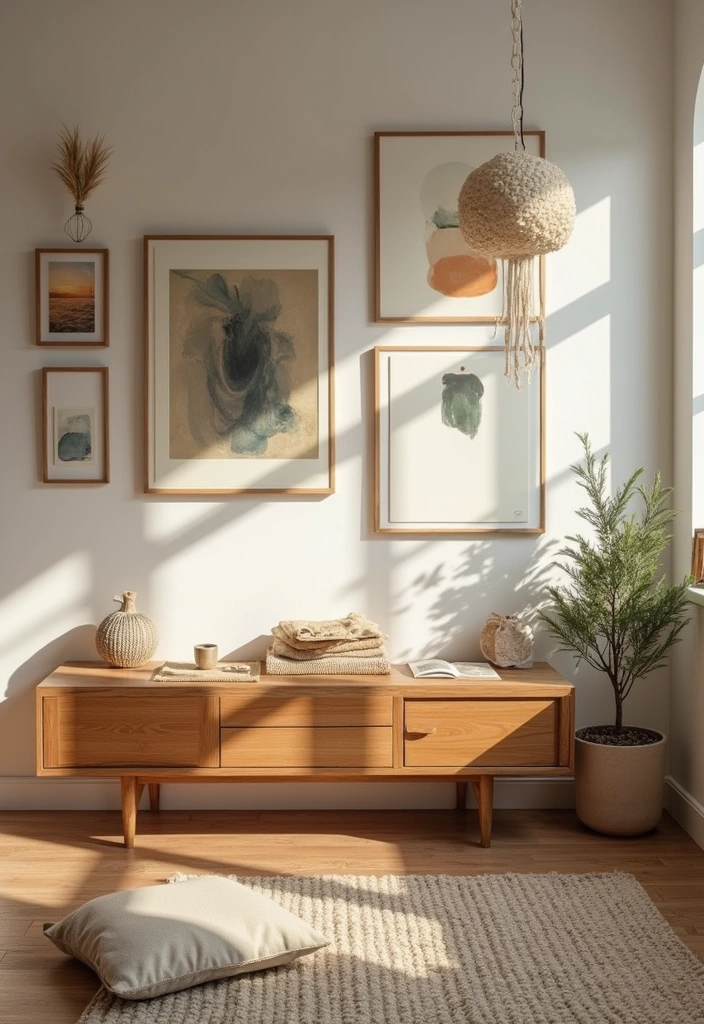
You want a home that feels calm yet warm. Minimalist decor can give you that balance. It does not have to be cold if you choose items with care.
Choose a few items with meaning. Pick pieces that tell your story without crowding the room.
– Limit personal pieces to 3–5 you truly love.
– Pick items that fit your color and style, not every memory you own.
– Rotate pieces every 4–6 weeks to keep the look fresh.
– Use a display case, shadow box, or glass dome for protection and a neat look.
– Put items where they are easy to see but not crowded.
Here is why this works. A small set of items brings character without clutter. You see them daily, so they stay special. If you keep too much, the room feels busy and tired.
How to choose and place. Ask yourself three questions: Does this item fit the room’s scale? Do I still enjoy it after a month? Does it remind me of a good moment without shouting for attention? A travel souvenir, a slim art print, or a family keepsake in a thin frame fits well when it has room to breathe.
Next steps: keep a tidy rotation plan, dust display pieces regularly, and store extras in labeled bins. With this approach, your space stays clean and personal.
14. Mind Your Lighting


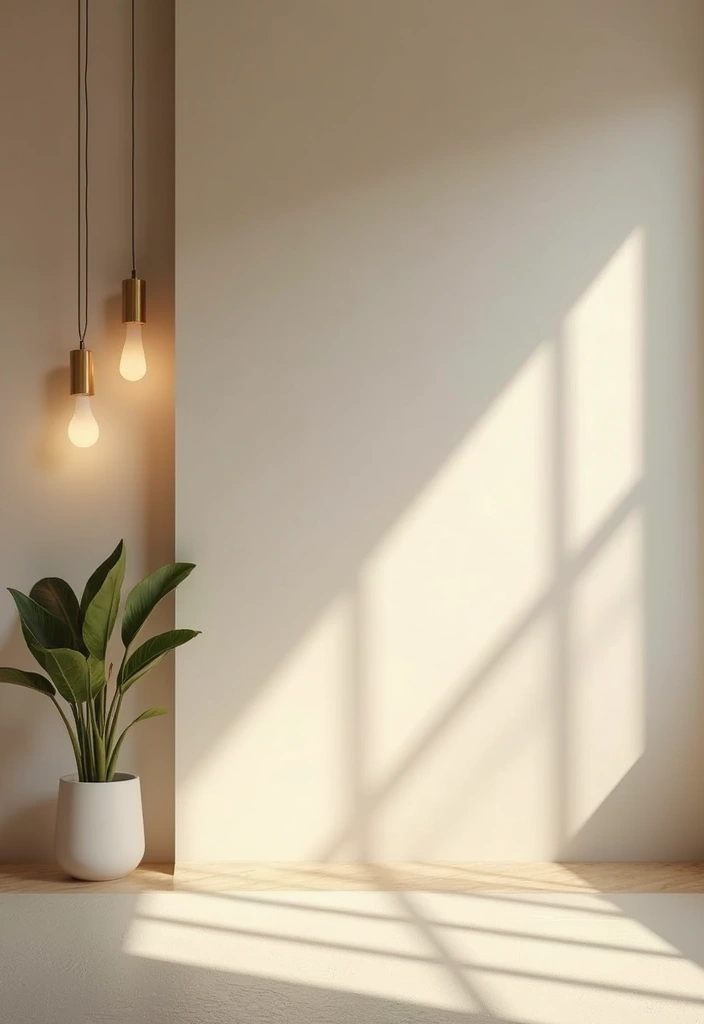
Your minimalist room can feel calm and open with the right light. Dense shadows can make it look small. Harsh glare tires your eyes. Start by inviting natural light. Hang sheer curtains to soften daylight while keeping privacy. Choose lamps with warm color. Warm light makes textures look softer.
Layering lighting changes how a space feels. Here is why. Ambient light fills the room softly. Your eyes will thank you. Task lighting helps you read and cook without eye strain. Soft light is forgiving on walls and fabrics. Accent light draws attention to a favorite piece and adds character.
Lighting ideas at a glance
– Use dimmers to adjust mood and save energy.
– Place a floor lamp in a shadowed corner for balance.
– Set a table lamp near your reading chair for focused light.
– Install warm white LED strips behind shelves or under cabinets to glow without glare.
– Add fairy lights in a corner for a gentle, cozy touch.
Start with one soft source by a window, then add a second and a third as your space grows. This plan keeps clutter away and makes the room feel welcoming, not loud. Keep the setup simple to let light stay in balance. Next steps are small changes you can test today. Test one change at a time to feel the difference.
Conclusion
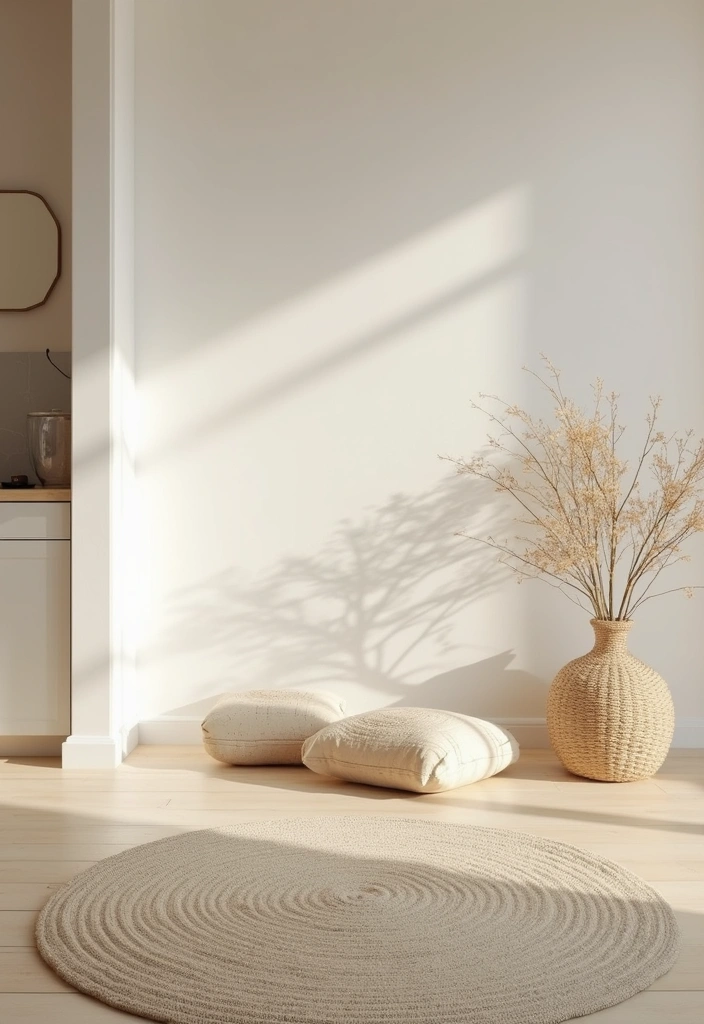

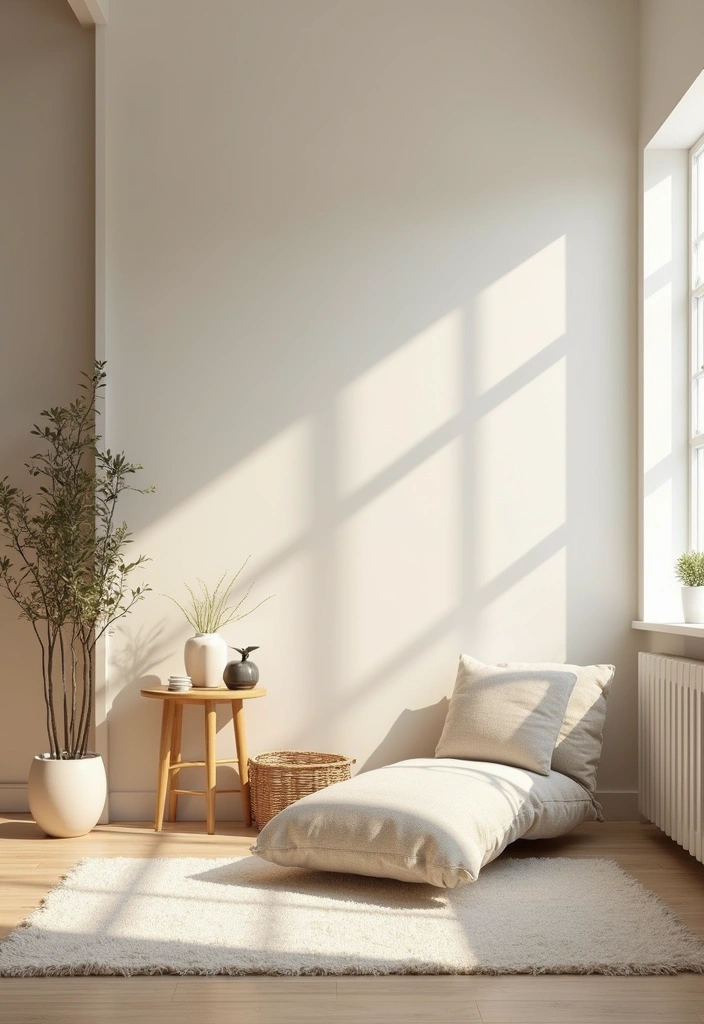
Creating a minimalist home isn’t just about cutting down on possessions; it’s about fostering a mindset of simplicity and clarity.
By implementing these tips, you’ll find that your space feels more open and inviting, and your mind can breathe easier too. Embrace the beauty of minimalism, and watch how your environment transforms into a sanctuary of peace and creativity.
Frequently Asked Questions
How Can I Start Implementing Minimalist Decor in My Home?
Starting your journey toward a minimalist home isn’t about a complete overhaul overnight. Begin by identifying a few key areas where clutter accumulates, like your living room or kitchen. Consider embracing a neutral color palette to create a calm, uncluttered look. Then, apply the ‘One In, One Out’ rule—for every new item you bring in, let go of one you no longer need. This gradual approach will help you declutter your space and mind without overwhelming yourself.
What Are Some Simple Ways to Declutter Regularly?
To maintain a minimalist home, it’s essential to declutter regularly. Start by setting aside just 10 minutes a day to tackle one area. You can also establish a routine, such as decluttering every Sunday. Use a simple checklist to guide you—ask yourself if each item serves a purpose or brings you joy. If not, consider donating or recycling it. Regular decluttering not only keeps your space tidy but also promotes a clearer mindset.
What Should I Look for When Choosing Functional Decor?
When selecting decor for a minimalist home, focus on functional pieces that serve a purpose while enhancing your space’s aesthetics. Look for items that are both beautiful and practical, like a stylish storage ottoman or a decorative basket. These choices help reduce clutter and keep your home looking sleek. Remember, every piece should earn its place in your home, contributing to both functionality and style.
How Can Natural Elements Enhance My Minimalist Decor?
Incorporating natural elements into your minimalist home can create warmth and connection to the outdoors. Think about adding plants, wood accents, or stone features to your decor. These elements not only soften the space but also introduce texture and life. A simple potted plant or a wooden coffee table can make a big difference in achieving a cozy yet uncluttered atmosphere.
What Are Effective Strategies for Personalizing a Minimalist Space?
Personalizing a minimalist home can be a balancing act. Choose a few items with significant meaning to you, like a piece of art or a family photo, and display them thoughtfully. This creates a warm atmosphere without overwhelming the space. Remember, personalization in a minimalist decor style should enhance the calm and simplicity of your home—so select items that truly resonate with you and fit within your overall design vision.
Related Topics
minimalist home
decluttering tips
functional decor
neutral color palette
open space design
quality over quantity
natural elements
vertical storage
mindful sourcing
easy decor
simple living
personalized minimalism
